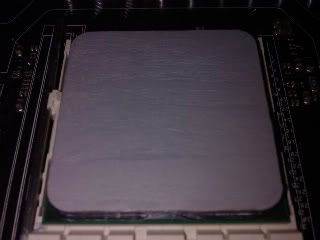I've always had a kind of 'procedure' for Tim'ing stuff and it's never failed me with AS5 (will explain in a sec), I've since moved to Coolaboratory liquid ultra, scary stuff but god damn is it good, so long as it never, ever ever touches Allu it's fine

With regard none 'diamond' Tim's, Back in CM's heatsink *hayday* I followed one of their techniques and it's never failed me

It's based more towards none-lapped surfaces.
Step 1 ) apply very small amount of paste and spread it, rub into all the nooks and crannies, wipe off but don't *clean* the surface, you'll see it's tinted (grey in most cases) that's good, that's EXACTLY what you want the stuff to do, fill all the microscopic inperfections
Step 2) do the same on the cpu
Step 3) Apply a small amount to cpu and spread evenly/thinly, granted, there's an art to this so you don't create pockets of air but I find it to be better than chucking a blob on and hoping it spreads properly.
Step 4) Chuck the CPU through a few heat cycles to bed-in the paste, that was always key to AS5 and sorted out any imperfections as it would effectively re-seat itself I guess?
Why don't I follow the 'grain of rice size blob and squash it' method?
The viscosity of most TIM's means it takes quite a lot of pressure to make that little blob spread out to the entire surface it's required to cover, and I've always been cagey about pressure on CPU's since I came into the game in the bare core days of Athlon cpu's.
I know some people think you don't need to cover the entire top of the cpu lid, due to placement of the cores, which is fine. But if there's contact area to be had, I'm sorry but I'm using it. The more contact you have between *smaller surface* and *bigger surface area* heatsink the better, creating any kind of 'hotspot' on the CPU lid to me just seems daft. *shrug*
All my opinion, but maybe I'm a bit oldschool... *shrug* it's never failed me up until now!








